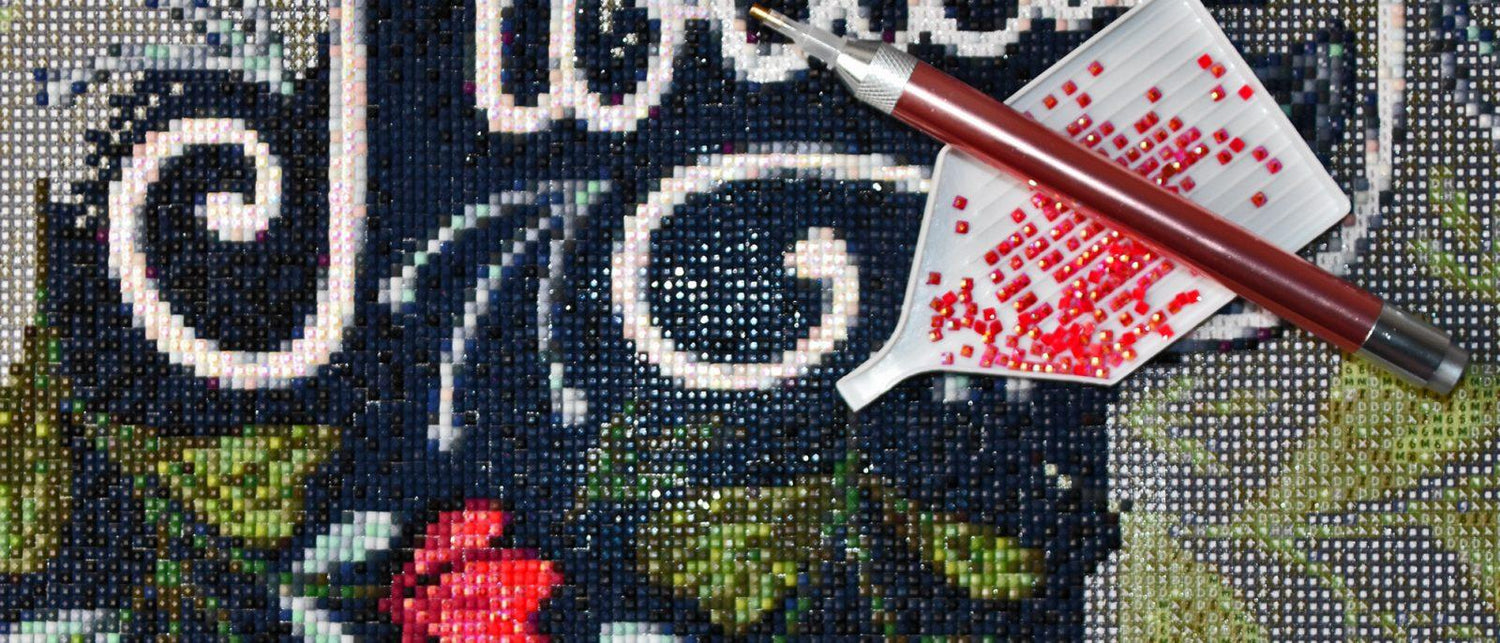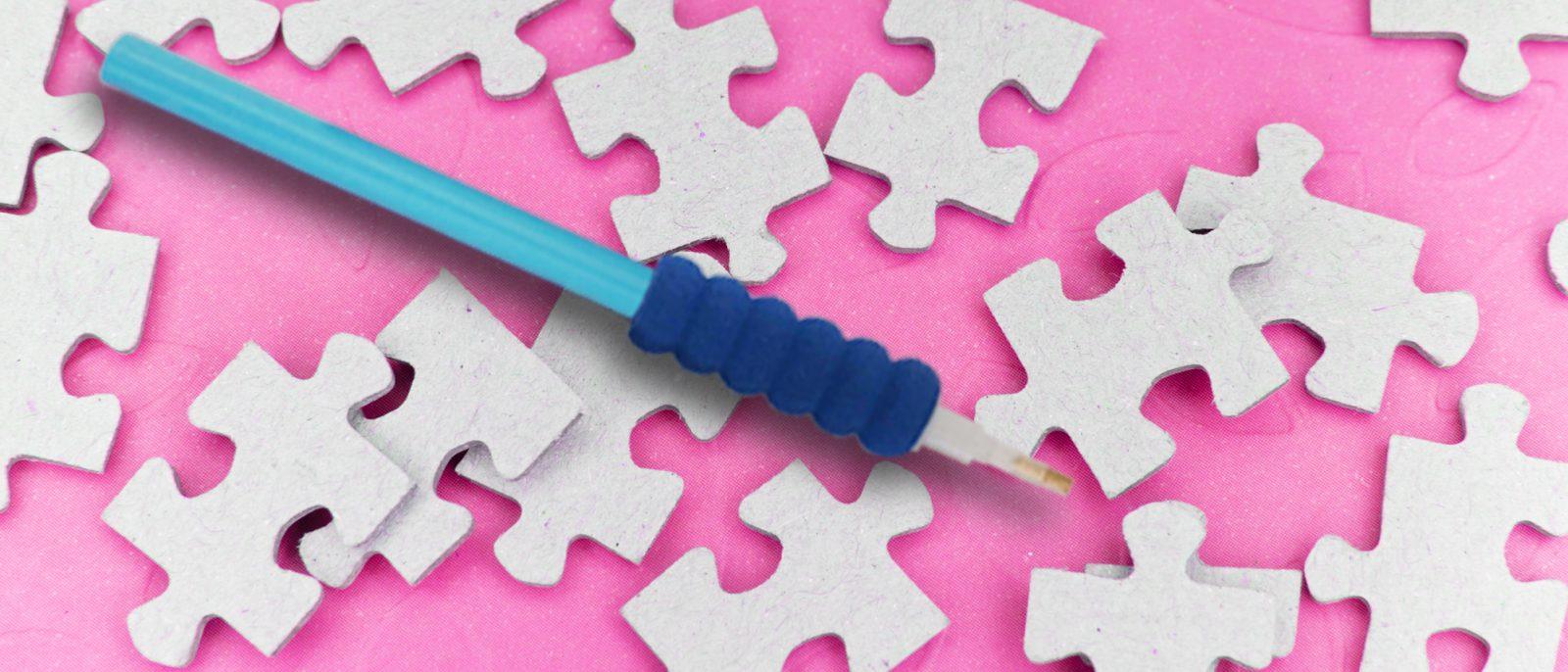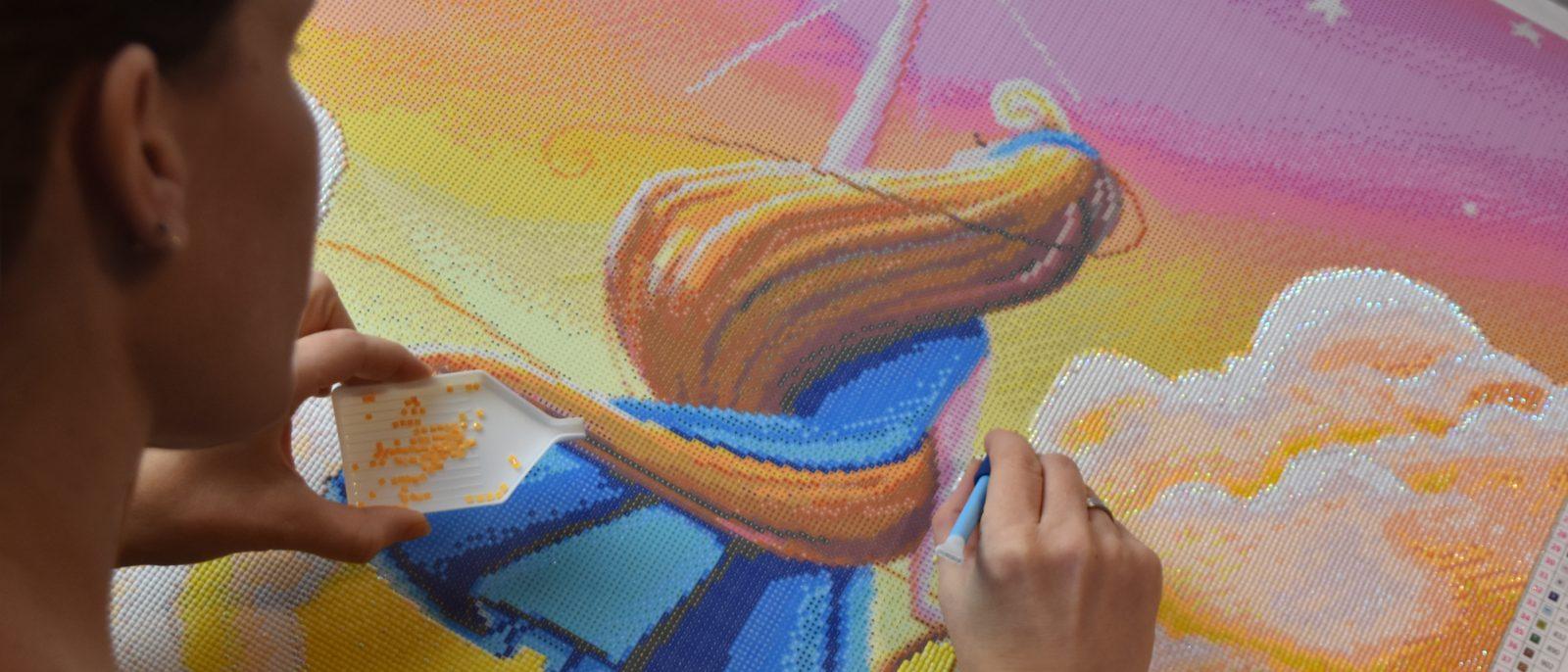Diamond Painting as a DIY trend
The big DIY trend used to be called "painting by numbers" - today it's called Diamond Painting. Some would describe it as a modern form of mosaic or puzzle, while others would say it is reminiscent of cross-stitch pictures. This is probably due to the fact that Diamond Painting combines many of the basics of various creative leisure activities and has thus invented a fascinating new form of creative activity that is not only completely uncomplicated to carry out, but also leads to beautiful results. The activity of diamond painting not only involves a great deal of manual skill and creativity, but also offers amazing relaxation mechanisms. The up-and-coming DIY trend and all its positive qualities have definitely convinced us and inspired us to launch our company Carat Art. Today, we would like to introduce you to 10 exciting facts about diamond painting that may be new to you.1. the origin of diamond art
Unfortunately, despite extensive research, we are unable to name a specific inventor or location. What is certain, however, is that the origins of this craft are very old and can be found in Asia. Its beginnings probably go back to an old tradition in which beads and similar materials were glued onto velvet or felt to form patterns and ornaments. Nowadays, a canvas is used as a base and, of course, the associated technical methods have also become more modern. Printed canvases, including a special adhesive in the form of a self-adhesive surface so that the diamond stones can form a permanent bond with the canvas, are now the basis of modern diamond painting, with which anyone can easily create beautiful works of art. The first diamond painting sets as we know them today came onto the market in China in 2015 and have since taken the DIY scene worldwide by storm.

2 The positive effects of diamond painting
At first glance, this DIY hobby seems to be all about creating a visually appealing picture using a simple process. However, there are actually far-reaching aspects with many positive effects behind the seemingly simple activity of sticking on stones. Because while you're busy sticking stone by stone, this activity also promotes a number of motor and mental skills that offer further benefits. While you keep your hands and brain busy with the structured and repetitive process of picking up and placing stones, your mind can rest. For this reason, many people use "painting" to reduce stress and relax. It is an ideal balance after a stressful day at work and can distract and calm people who are prone to anxiety or inner restlessness. It is no coincidence that diamond painting is also used in art therapy. Diamond painting is ideal for finding a balance to hectic and often stressful everyday life. Working with the small stones has an extremely calming effect on body and mind and leads to a state of deep relaxation. All fears, worries and problems can be banished from the mind, as only the moment and the diamond image are perceived. Working with the glittering stones not only creates beautiful pictures, but sorting and gluing the stones also has many positive effects on your whole life. And although the motif and pattern are already predetermined on a canvas, working on a diamond painting still trains your imagination and creativity. The individual work steps required also train and improve your fine motor skills. In addition, diamond painting also satisfies the psychological reward system in the brain - individual completed sections and, of course, the finished picture at the end give you a strong feeling of satisfaction. Not to forget, it promotes discipline and patience, which such work demands of you. What's more, diamond painting is not just an activity that you can do all by yourself. If you wish, you can share your artistic work with others. Particularly large or multi-part motifs such as our "Elephants in the sunset" or "A morning in Paris" are particularly suitable for working on with several people at the same time. The whole family can help out and spend some quality time together. Finally, the finished artwork can be hung up together and used to decorate the walls of your home individually.
3. particularly easy to learn & master
When painting by numbers, you need a steady hand and sufficient practice to draw the brush correctly and confidently over the lines and fields to achieve an appealing result. Painting or drawing freehand is even more difficult, as you need a lot of practice as well as a certain talent and plenty of spatial imagination. The result is often not what you had imagined, which is disappointing and demotivating. There is also a high potential for mistakes in pottery, clay, embroidery, crochet and many other creative leisure activities. In addition, many creative hobbies require a lot of equipment, utensils, space and often years of practice to achieve beautiful results. Painting with diamonds, on the other hand, does not require any extraordinary skills or artistic experience, especially due to its easy-to-understand principle. All you need is time, a systematic approach, patience and a little dexterity to get closer to completing your individual work of art stone by stone. Diamond Paintings can also be created in different levels of difficulty thanks to different sizes and several diamond shapes, and the choice of infinitely different motifs means it never gets boring!
4. not all little stones are the same
The small Diamond Painting stones are available in different colors, shapes, sizes and materials.- In total, there are around 450 different colors, each of which has a name and its own individual number, the so-called DMC code.
- Diamonds are available as standard with either a square or round basic shape, with the square ones having a side length of 2.5 mm and the round ones a diameter of 2.8 mm.
- In principle, both round and square stones are available in two different materials: resin or acrylic, which is poured into the corresponding mold using special machines.
- In addition to the round and square shapes, there are also special shapes (drops, hearts, etc.)
- The special shapes are mostly rhinestones, which have a very special and sparkling effect and look like glass. They are available in various sizes (1mm to > 25mm). There are also square and round stones in rhinestone design
- The round and square diamond stones are also available in various special designs
- AB stones: An additional coating causes their surface to shimmer in various iridescent colors. This makes them shine and sparkle even more in the light. The abbreviation AB comes from "Aurora Borealis", as their shimmer is reminiscent of that of the northern lights in the polar sky.
- Diamonds with a "glow in the dark" effect. They can be used to highlight parts of the picture or hide secret lettering that can only be seen in the dark. In normal light, these stones are usually white-greenish.
- Also new are stones with a metallic effect in gold, silver, iron and bronze look.

5. the number of diamonds in a set
The total number of diamonds contained in a set naturally always depends on the size of the canvas. A large-format canvas can contain several tens of thousands of diamonds. For round diamonds with a diameter of 2.8 mm, the number of diamonds on a surface can be calculated using the following formula: Picture width in cm x picture height in cm x 12. For a smaller picture of 30x40cm, this results in a total number of 14,400 little stones and for a large picture of 50x70cm, the impressive figure of 42,000 little stones. As square diamonds are slightly smaller with a side length of 2.5mm, pictures with square diamonds automatically contain a larger number of diamonds per set. The formula for calculating this is as follows: Picture width in cm x picture height in cm x 16. This means that a smaller picture of 30x40cm already has a total number of 19,200 stones and a large picture of 50x70cm has an impressive 56,000 stones.
6 The difference between 3D and 5D
When selecting products, you have probably already noticed the terms 3D and 5D Diamond Painting. If you've ever wondered what these terms mean, here's the explanation: it's not about different spatial dimensions of perception, but about the facet cut of the stones. This marking refers to the production method and the nature of the stones. 3D diamonds have 3 facets on each side, while 5D diamonds have 5 facets on each side. The difference therefore lies in the number of facets. When light hits the diamonds, it is reflected back from the facets, which causes the diamonds to sparkle and glitter and the more facets a diamond stone has, the shinier and sparklier it appears. For this reason, high-quality diamond painting manufacturers only use 5D diamonds for their diamond paintings.

7 Not just something for adults
Advertising sometimes gives the impression that diamond painting is only for adults, but the crafting trend brings great joy to young and old alike. Especially because this great leisure activity also trains many important skills, diamond painting is a great activity idea for children in particular. Activities in which children not only have fun, but which also encourage them in a playful way, are particularly important for children's development. Diamond Painting DIY sets are not only proven to be a lot of fun for children, but at the same time diamond painting supports skills such as:- Fine motor skills
- concentration
- perseverance
- Attention to detail
- Sense of color
- dexterity




Leave a comment
This site is protected by hCaptcha and the hCaptcha Privacy Policy and Terms of Service apply.